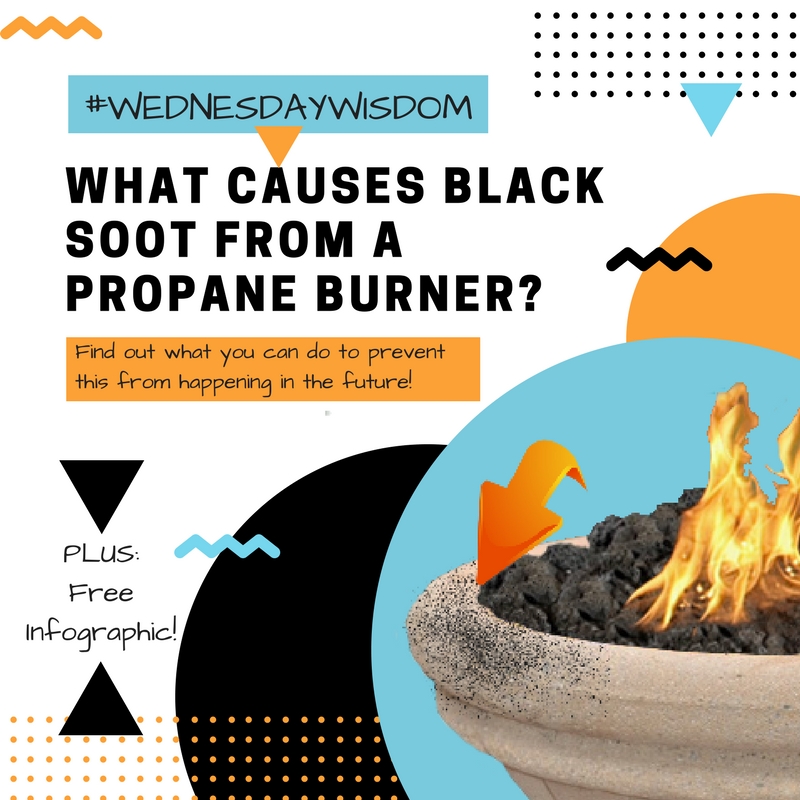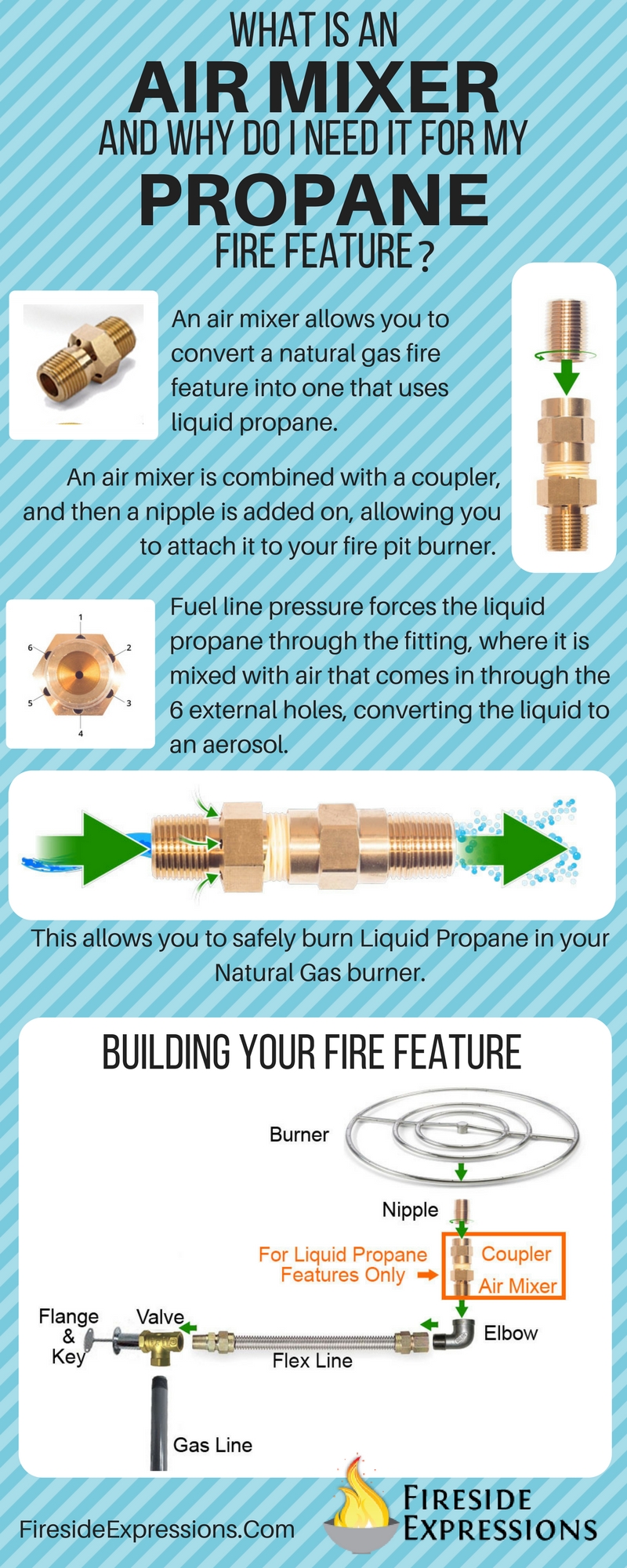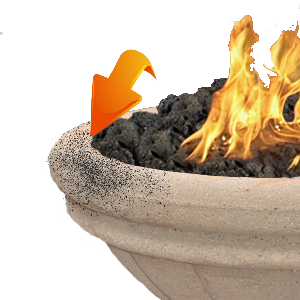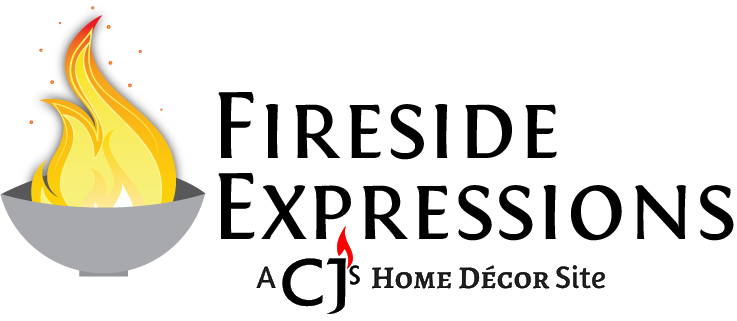 Propane is an extremely efficient fuel source for your outdoor product, but did you know that if you lack the proper components during installation that your feature can display a black residue over time? Typically, soot is associated with exhaust from the wood burning process. So why is it showing up on your outdoor fireplace, fire bowl, or fire pit ornament?? There are a few good reasons why, and Fireside Expressions is highlighting a special edition blog post for #WednesdayWisdom to discuss this matter!
Propane is an extremely efficient fuel source for your outdoor product, but did you know that if you lack the proper components during installation that your feature can display a black residue over time? Typically, soot is associated with exhaust from the wood burning process. So why is it showing up on your outdoor fireplace, fire bowl, or fire pit ornament?? There are a few good reasons why, and Fireside Expressions is highlighting a special edition blog post for #WednesdayWisdom to discuss this matter!
- WRONG OR NO AIR MIXER FOR PROPANE
When you burn propane, water vapor and carbon dioxide are produced. These molecules are colorless and they cannot be seen by the naked eye. Propane that is burned straight without incorporating oxygen into the process will emit black smoke which leaves soot behind on your outdoor fire feature. While a "complete" burn of all molecules is ideal, this is nearly impossible with a propane burner. Incorporating the air mixer is the best way to achieve a cleaner combustion of the fuel without creating soot.
 While many of our products come with the appropriate orifice to easily connect to a propane fuel line, there are occasions where a homeowner decides to convert from natural gas to propane and goes on the hunt for that needed air mixer from a local hardware store. If the wrong size connection piece is used with the burner system, the propane will not burn right and thus produce soot.
While many of our products come with the appropriate orifice to easily connect to a propane fuel line, there are occasions where a homeowner decides to convert from natural gas to propane and goes on the hunt for that needed air mixer from a local hardware store. If the wrong size connection piece is used with the burner system, the propane will not burn right and thus produce soot.
- INCORRECT PROPANE TO OXYGEN RATIO
Ideally, the ratio of propane and oxygen to allow for a cleaner burn with a lower carbon monoxide output is 4:96. Anything less than 4 parts propane is considered a "lean burn". This is recognizable by thin flames that look as though they are rising from the burner and disappearing into the air. A ratio that has more than 4 parts propane is termed a "rich burn", which is even easier to identify. The flames are more yellow and appear thick and much larger than normal.
By incorporating the right amount of propane and oxygen, the regulator can be adjusted. This is best accomplished by a certified gas technician. In some cases, a simple adjustment may not be enough, leading to the replacement of the regulator.
- BURNER ASSEMBLY IS NOT CLEAN
If your propane burner and pilots are not clean, the appropriate burning of liquid propane is hindered. This creates a situation where the molecules that escape into the air will accumulate on the surface of your feature, appearing as black soot. Not only does it stain anything it lands on, it can also deteriorate the condition of your burner system.
You can use something as simple as a soft bristled brush to clean the surface of your propane burner. If the ports on your assembly are clogged, you can use a small drill bit (one that will slide easily through the diameter of the holes) or even a toothpick to loosen the debris and open the ports so that the fuel can flow easily through the unit. Always follow the manufacturer's directions for proper care and maintenance of your burner.
- MALFUNCTIONING GAS REGULATOR
A faulty regulator has a tendency to do one of two things:
- Let too much gas into your feature.
- Not allow enough propane into your feature.
Either situation will cause some of the fuel to burn improperly. Always make sure your pressure adjustments are being set by a certified gas professional so that your regulator operates efficiently and gas does not escape from any of the fuel line components. If an adjustment simply does not improving the performance of the device, a replacement may be necessary.
- TOO MUCH OR TOO LITTLE GAS PRESSURE
Believe it or not, gas pressures are measured in inches of water column or wci. The recommended pressure for liquid propane is 11-14 wci (which is equal to 1/2 psi, or pounds per square inch). Because pressures inside a propane tank (installed before your regulator) tend to be higher than your gas feature, the use of two regulators is recommended - one at the tank and one at the gas fueled application. This will reduce the pressure from the tank by about 10 psi, ensuring a safe and reliable gas supply to your propane feature. Again, a certified gas professional is the best person to assess your current setup. If your gas pressure is too low, he/she may either make adjustments to the pressure at one of the regulators or incorporate a fuel line with a larger diameter.
What to do if you see black smoke escaping from your feature:
Immediately shut off the propane regulator and call a certified gas technician! This is a sign that carbon monoxide is being released from your feature, which can be very dangerous, even for outdoor fireplaces, fire bowls, etc.
 What you can do to resolve or avoid the build up of black soot on your feature:
What you can do to resolve or avoid the build up of black soot on your feature:
Employing the help of a certified gas professional to check over your fuel line and connections is your best (and smartest) bet. Trying to make adjustments to the regulator and components can be dangerous to you, your loved ones, and your outdoor product. Avoid using your outdoor fire feature until it has been serviced by a technician.
Fireside Expressions, has moved over to its sister site Fireplace Doors Online, wants you to play it safe when enjoying your outdoor fire features. If you ever have any questions about the use of natural gas vs. propane, we encourage you to email ([email protected]) or call us at 877-373-6677. With over 30 years of knowledge and experience combined, we know a thing or two about safety!
